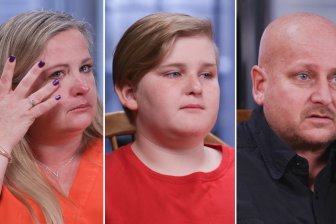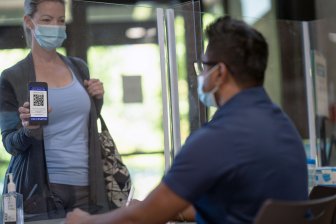Members of ‘Moms Stop the Harm’ set up a Christmas tree at Kelowna General Hospital on Friday morning.
On the tree are pictures and names of loved ones who died from the poisoned drugs.
The white and purple “Tree of Hope” aims to raise awareness of the opioid crisis and combat the stigma of drug dependence that can make it difficult for people to seek help.
Read more:
Kelowna Mom Calls For Safe Drug Supply As Toxic Drug Deaths Continue To Rise
“We just hope to raise awareness that the opioid crisis is actually a medical emergency. What better place to show that than in a medical center, ”said Helen Jennens of Moms Stop the Harm.
“We want people to recognize that the harm of drugs can happen to anyone. It could be anyone’s child. We work very hard on prevention and awareness so that children do not die. “
Jennens lost two children to poisoned drugs, in 2011 and 2016, and says it’s devastating to see new faces and names added to the tree every year.
“Every new ball that is placed in the tree that we meet is a heartbroken family,” Jennens said.
Read more:
Okanagan Mothers Discuss 5th Anniversary of BC Overdose Health Emergency
Interior Health’s chief medical officer, Dr. Silvina Mema, said addressing stigma is an essential part of addressing the overdose crisis.
“There is a widespread belief that people who die from overdoses are choosing to use substances and it really is up to them to find ways to recover and avoid the use of illicit substances. People need to understand that this is not true. In many situations, drug use is not an option. it is a motivation driven by the circumstances of that individual and that situation in their life, ”said Mema.
The Christmas tree is climbing as British Columbia records its worst month of illicit drug deaths.
Read more:
Okanagan Family Honors Mother’s Memory With Fundraiser Walk
On Thursday, the provincial forensic service released figures showing there were 201 illicit drug deaths in October, 23 in the Okanagan.
In the first ten months of this year, 60 people died in Kelowna and 33 in Vernon. That’s more drug deaths than Vernon has seen in a single year at any time in the last decade.
Read more:
Vernon on track to deadliest year of opioid crisis
“We need to provide a secure supply. We need to get toxic drugs off the market. Even if [BC has] requested the decriminalization of small amounts … for personal use, those are still toxic drugs. They are still lethal. That doesn’t mean it’s safer, ”Jennens said.
“Until we have a recovery system, we must provide a more secure supply and prevent people from dying because a dead person cannot recover.”
Read more:
The other health crises parents say must be treated as urgently as COVID-19
Mema points out that Interior Health has a program to offer injectable opioid agonist (iOAT) treatment.
“That is a way of accessing the drugs that will not result in poisoning or the uncertainty of what … is in that supply,” Mema said.
Jennens said that if widely available, iOAT can function as a secure supply but he notes that some Lower Mainland patients have been provided access to prescription heroin.
Clock:
Vancouver clinic paves the way by providing take-home heroin
In July, the province announced that it would gradually introduce a prescribed safer supply policy.
Between March 2020 and October 2021, 1,590 people in the Interior have received drugs under the first phase of the province’s safe supply program, the province said.
“Interior Health, along with all other health authorities, is currently implementing the second phase of the safe supply plan within their region. We will have more information to share on this in the new year, ”the Minister of Mental Health and Addictions said in a statement.
© 2021 Global News, a division of Corus Entertainment Inc.
Reference-globalnews.ca

